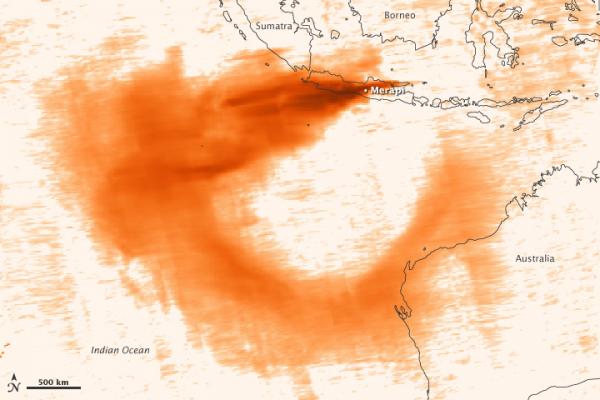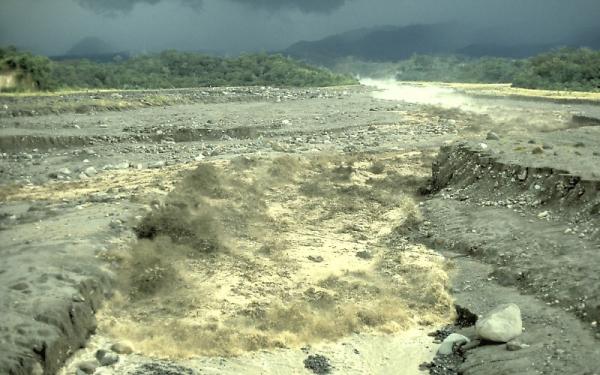Merapi Volcano Sets a Record as Death Toll Climbs


Indonesia's Mount Merapi has set a record with its continuous deadly eruptions, and its blasts have wiped out vegetation around the volcano and pushed the death toll to 194, according to the latest reports.
Merapi erupted for 120 hours in 1872, according to historical records. The current eruptions began Oct. 26 and passed the 120-hour mark today (Nov. 11). The intensity of the eruptions appears to be declining, yet the threat of so-called cold lava is still serious, according to the Indonesia National Disaster Management Agency.
As the world's largest archipelago made up of 17,500 islands, with 235 million people spread across them Indonesia sits between the world's most active seismic region , the notorious Pacific Ring of Fire , and the world's second-most active region, the Alpide belt. Sandwiched between the two earthquake belts, the islands experience some of the most powerful volcanic eruptions and strongest quakes on Earth.
The official death toll from Mount Merapi has been raised to 194 to include deaths from respiratory problems, heart attacks and other illnesses related to the eruptions that started more than two weeks ago, the Associated Press reported. [FAQ: Will Merapi stop erupting any time soon? ]
According to the National Disaster Management Agency, 598 people are now hospitalized and 343,909 people have evacuated to the safety zone, 12.4 miles (20 kilometers) away from Merapi.
Cold lava floods
Floods of lava are threatening areas surrounding the volcano, but not just the hot lava that typically comes to mind with an eruption.
Get the world’s most fascinating discoveries delivered straight to your inbox.
Lava is red hot when it pipes out of a volcano. Soon the color deepens to a dark red, gray or black as it cools and hardens. Hot lava flows like hot tar, but the dark, or cool, lava flows sluggishly, like thick honey in some cases or in others like pasty, blocky masses, according to the U.S. Geological Survey (USGS).
Volcanic debris has clogged many of the rivers that begin on Merapi's slopes. Officials are now worried that cold lava could overwhelm these rivers and create flash floods. To head off the threat, people living along the banks of the Code river were told to stay 1,640 feet (500 meters) away from the river, reported the Xinhua News Agency.
To prevent the lava from flowing upstream, Indonesian officials are dredging the river to make it flow faster and remove the debris from the eruption, the head of the disaster agency told Xinhua.
Dead zone
The scorching volcanic ash belching from Mount Merapi has killed much of the plants and trees within 12.4 miles of the mountain, leaving a virtual dead zone in its wake.
Volcanic ash covers trees, weakens their branches and spoils their fruit. More than 3,460 acres (1,400 hectares) of snake fruit trees have been destroyed, wiping out a major source of income for many in central Java, the Jakarta Post reported.
Merapi's deadly eruptions continued as Indonesia struggles to recover from a 7.7-magnitude earthquake that triggered a 10-foot (3-meter) tsunami. The earthquake resulted from the subduction of one of the Earth's rocky plates below another (a process called thrust faulting). [Related: Why Do Some Earthquakes Cause Tsunamis But Others Don't?]
Indonesia is home to 129 active volcanoes. The two most active ones mounts Kelut and Merapi (meaning "mountain of fire") sit on the island of Java, where the Indonesian capital of Jakarta is located, about 310 miles (500 km) northwest of them.
Mount Merapi last erupted in 2006, killing two, but its violent history includes more than 1,300 people that were killed in a 1930 eruption and possibly 70 killed in a 1994 eruption.
While state volcanologists have no way of knowing if the volcano will stop erupting, anyone can now monitor Merapi's eruptions on a new webcam.



